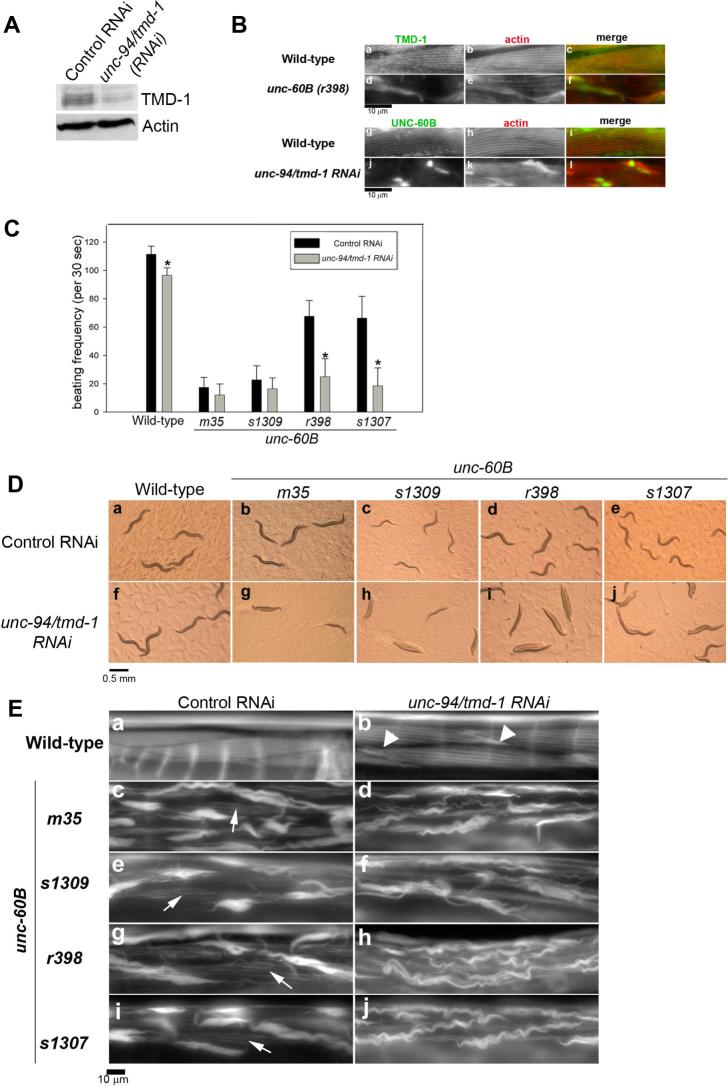Figure 3.
unc-94/tmd-1(RNAi) strongly enhances actin disorganization in unc-60B mutant backgrounds. (A) Effect of unc-94/tmd-1(RNAi) on the TMD-1 protein level. Wild-type worms were treated by control RNAi or unc-94/tmd-1(RNAi) and the TMD-1 protein level was determined by Western blot using anti-TMD-1 antibody. Anti-actin antibody was used to monitor equal loading of the protein samples. (B) Localization of TMD-1 and UNC-60B in unc-60B mutant and unc-94/tmd-1(RNAi) muscles, respectively. TMD-1 (a and d) and actin (b and e) were immunolocalized in the body wall muscle of wild-type (a-c) and unc-60B(r398) (d-f). Merged images are shown in c and f (TMD-1 in green and actin in red). UNC-60B (g and j) and actin (h and k) were immunolocalized in the body wall muscle of wild-type (g-i) and unc-94/tmd-1(RNAi) (j-l). Merged images are shown in i and l (UNC-60B in green and actin in red). Bar, 10 μm. (C) Effects of unc-94/tmd-1(RNAi) on worm motility in unc-60B backgrounds. Wild-type and four unc-60B alleles were examined. m35 and s1309 are strong loss-of-function, while r398 and s1307 are weak loss-of-functinon. Data are means ± SD, n=10. Asterisks indicate p<0.005 by t-test comparing control RNAi and unc-94/tmd-1(RNAi) for each strain. (D) Appearance of wild-type (a and f) and unc-60B (b-e, g-j) worms treated with control RNAi (a-e) or unc-94/tmd-1(RNAi) (f-j) on agar plates. Bar, 0.5 mm. (E) Actin filament organization in the body wall muscle of wild-type (a and b) and unc-60B (c-j) treated with control RNAi (a, c, e, g, and i) or unc-94/tmd-1(RNAi) (b, d, f, h, and j). Arrowheads in b indicate actin aggregates. Arrows in c, e, g, and i indicate striated organization of actin filaments. Bar, 10 μm.

